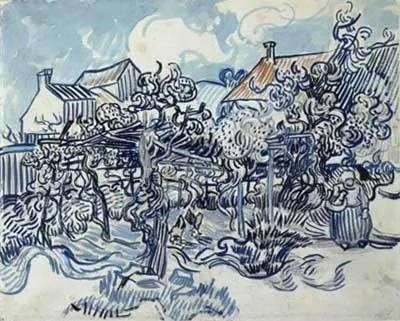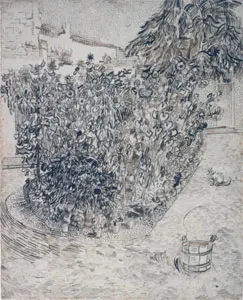Coloured Pencils: Brazilian Lightfastness Test
(Jan. 2006 - Jan. 2007)
(click the image to see a larger version and check the brand and pencil no.)
Colours exposed to Brazilian daylight for a year on the left;
colours preserved in conditions without light on right
Lucio Rubira is a 43 year old comics artist and professional illustrator living in São Paulo Brazil. He uses coloured pencils both for his job and his own personal artwork (see below) and given the strong light found in Brazil is particularly interested in the quality and lightfastness of material used for his own artwork.
Lucio recently
posted a thread about a year long colourfastness test he has been conducting on the
Wet Canvas Colored Pencil Forum. This involved testing the lightfastness of Prismacolors, Polychromos and Pablo coloured pencils of similar colours (see above) in identical light conditions and against a control chart of colours kept away from all light for the duration of the test.
 Hong Kong 2005
Hong Kong 2005
coloured pencil
copyright Lucio Rubira
I invited Lucio to contribute to my blog about his test and he sent me larger versions of his colour charts than those available on the forum. For details of how the tests were conducted see Lucio's explanation below. As you can see the colours most affected are Prismacolor 1013 (Deco Peach) - which has completely disappeared - and Prismacolor 1028 (Blue Slate).
Colourfastness in Colored pencils
Lots of CP artists are concerned about the colorfastness of their colored pencils. As CP artwork once sold may not be framed and exposed to light to museum standards we all need to be careful to avoid any pencils that fade when exposed to light. I work mainly with Pablo from Caran D´ache and Faber Castell's Polychromos, but I got some samples of Sanford's Prismacolors to put them side by side in a small test.
I made two color charts on Fabriano 4 acid free paper using a Prismacolor pencil and then and the nearest colours to that using two other brands (Faber Castell Polychromos and Caran d'Ache Pablos - with Stabilo pencils used to fill some gaps). I put one chart in a drawer inside a black envelope. I attached the other chart to a window and it was exposed to intense daylight for one year from January of 2006 to January of 2007. This wasn't direct sunlight but it was tropical sunlight as I live in São Paulo, Brazil.
I am a illustrator and my works are scanned and later they rest in a dark place safe almost forever. However, if I produce work which is going to be displayed (eg a portrait) I am very concerned with the resistance of colors to light. Imagine a baby portrait made with a lot of Deco Peach ( Prismacolour 1030 ) I would have a disaster in a couple of years of inappropriate exposure to bright daylight!
I think the color comparison is self explanatory. I have to say that if the test was made with the charts protected with good fixatives and/or UV glass it's likely that the results would be different. Some UV glass has a protection factor of more than 90% . Ordinary thick glass will also probably help to protect the more fragile colors.
Traditionally, the colours which tend to be most robust when exposed to light are browns. Those that are most fugitive are pinks, purples and all light shades. Sanford recognised the very serious problem it had with its Deco colours and has now introduced a set of
lightfast pencils. I understand that it has also withdrawn all those colours which caused the most problems in terms of lightfastness - which includes all the deco colours. It's certainly the case that they are no longer listed as part of the
Premier Pencil range by Sanford - although Blue Slate (1024) is still listed and maybe its inclusion should be reviewed again?
Lucio goes on to comment.....
Serious artists have considerable difficulty at times making sure they are working with top quality products. The colored pencil makers usually rate the colorfastness of the pencil in the body of the pencil but some times we have to search their websites to find what the information means.
I agree with Lucio that it would be a huge bonus for all serious CP artists if all the coloured pencil manufacturers were to make good quality and detailed techinical information about lightfastness easily accessible on their websites and using universal technical terms and standards. I'm not clear at the moment which manufacturers are signed up to the new lightfastness standard.
If you have not already done so,
I recommend that you should:
- review lightfastness information supplied by manufacturers
- identify pencils which don't have a good lightfastness rating
- go through all your pencils and separate out all those which don't have good lightfastness ratings and/or are no longer listed as being supplied by the manufacturer. In general, colours withdrawn are those which are now recognised to be fugitive.
- Unless you only produce prints and don't sell originals and/or keep artwork in sketchbooks you should now chuck all the pencils with fugitive colours. If you're being really rigorous get rid of all those except the most lightfast.
- make sure all your future pencil buys involve pencils with good lightfastness ratings.
You might also want to take a look at the
new lightfastness module within my squidoo lens
"Coloured Pencils: Resources for Artists". This includes all the links I can find to information about lightfastness in coloured pencils which is independent of that provided by the manufacturer. It includes:
- all known links to the websites of coloured pencil manufacturers - including a new link (hurrah - found it last!) to the Royal Talens Van Gogh lightfast pencils.
- an explanation by Bet Borgeson of a simple way in which you can test your coloured pencils in your own home and
- an example from another artist, Sarah Longrigg, of her own test on black paper (over a two and a half year period). Her test was conducted at her home close to the West Highland Way in Scotland - a bit of a difference from São Paulo Brazil!
An exercise still needs to be done comparing watercolour pencils with artist pencils - as dilution with water generally impairs lightfastness when pigments are less than the best.
In the meantime, Lucio also tells me that if any manufacturers would like to engage him to test any of their existing or new coloured pencil products in Brazilian sunlight and would like to send him pencils to try he'd be very happy to oblige! Lucio can be contacted either by leaving a comment on this blog post or via me.
Links:
Technorati tags: art ,Caran d'Ache Pablo, colour, color, Derwent, Faber Castell Polychromos, Prismacolor, Royal Talens
 Cypresses, 1889
Cypresses, 1889















